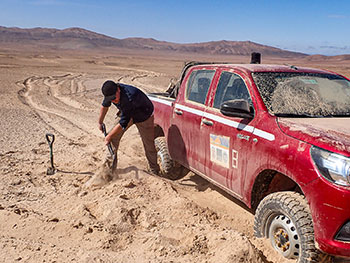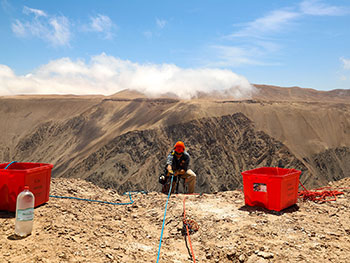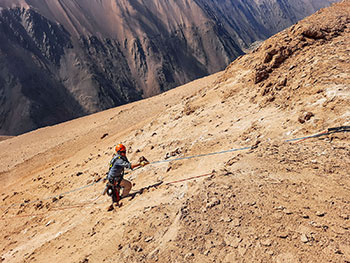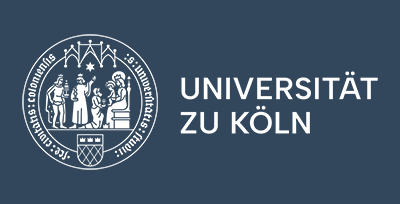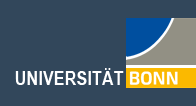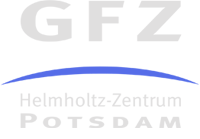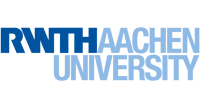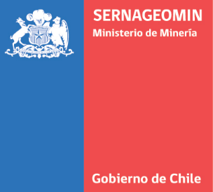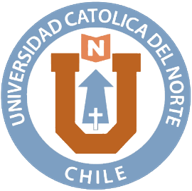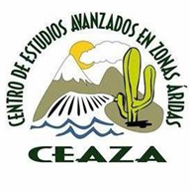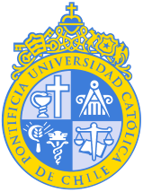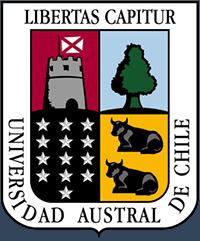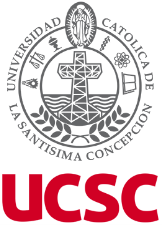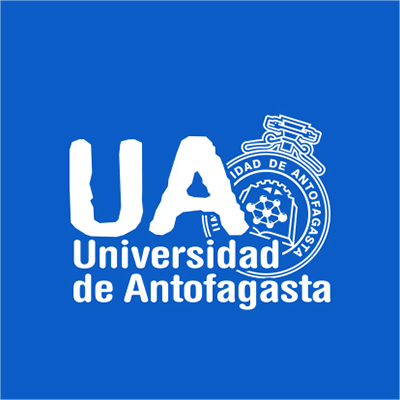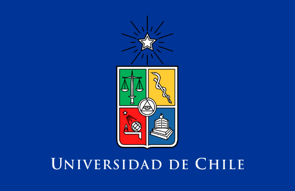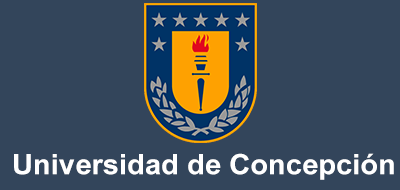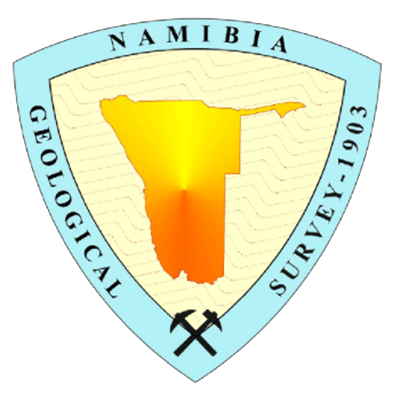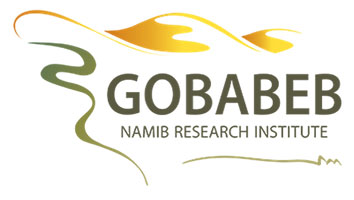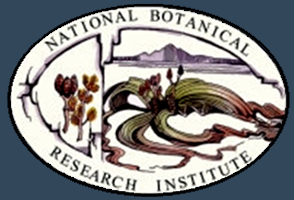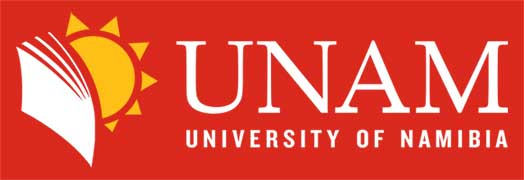|
During the course of the Chile Introduction Excursion of the CRC1211 that took place in March 2022, a small group of researchers conducted an unusual sampling trip to the “Quebrada de Tiliviche” Canyon, near the small village of Pisagua. Damián López, Christian Tiede and Benedikt Ritter drove through a literally “chusca” nightmare in order to reach the canyon’s ridge. One of the trucks got stuck and it took them three hours of shovelling to free the vehicle and resume their way (Fig. 1). The sampling itself also took a lot of effort. Steep slopes and walls where the targeted outcropping bedrock and deposited sediments were lying required the use of climbing gear in order to access the sampling points (Figs. 2-4). At the sampling site the Tiliviche Canyon is up to 600 meters deep (Fig. 2), where presumably Oligocene to Miocene sediments are outcropping at the canyon walls within small intramontan basins. Oligocene to Miocene old sediments and tephra layers were sampled to reconstruct their time of deposition and paleoenvironment. Investigating these old Paleogene to Neogene sediments allow us to explore the evolution towards hyperarid conditions and tectonic movement of the Coastal Cordillera in relation to their sediment supplying catchments to the east (Western Cordillera). Samples from the Quebrada de Tiliviche will complement our dataset from the Rio Loa further to the south, which were sampled together with the Geological Survey of Chile (Sernageomin) in July 2019. |
Video: "Extreme sampling at the Tiliviche Canyon” (Credit: Benedikt Ritter) |
|
|
|
|
|
|
|



